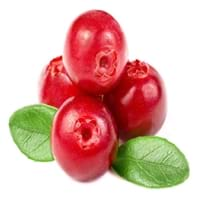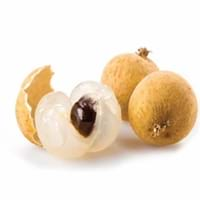Health Benefits
Cancer prevention, Heart care, Kidney stone treatment, Scurvy treatment, Ulcer prevention
Anti depressant, Anti-inflammatory properties, Healthy mucus membrane, prevents oral cavity cancer, Prevents anemia, Prevents cases of morning sickness, Prevents lung cancer, Skin rejuvenation, Treatment of colonic diseases
General Benefits
Anti-inflammatory properties, Boosts immune system, Digestive aid, Fights against infections, Strengthens bones
Anti oxidant properties, Anti-inflammatory properties, Digestive aid, Gives you energy, Suppresses Arthritis
Skin Benefits
Anti-aging benefits, Reduces wrinkles, Skin rejuvenation, Treatment of acne
Reduces wrinkles, Skin rejuvenation
Hair Benefits
Promotes longer and healthier hair, Protects hair, Treatment of dandruff
Not Available
Allergy Symptoms
Anaphylaxis, Breathing difficulty, Itching, Skin rash, Swelling of mouth, tongue or lips
Itching, Swelling of mouth, tongue or lips, Tingling sensation in mouth
Side Effects
Allergic reaction, Diarrhoea, Nausea, Stomach pain, Vomiting
Mouth irritation, Weight gain
Best Time to Eat
Any time except an hour after meal, Don't consume at night and before bed
As a snack in the late afternoon
Vitamin B5 (Pantothenic Acid)
Vitamin C (Ascorbic Acid)
Vitamin E (Tocopherole)
Not Available
Vitamin K (Phyllochinone)
Not Available
Lutein+Zeaxanthin
Not Available
Calories in Fresh Fruit with Peel
Calories in Fresh Fruit without Peel
Not Available
Not Available
Calories in Frozen Form
Not Available
Calories in Dried Form
Not Available
Calories in Canned Form
Not Available
Calories in Jam
Not Available
Type
Berry
Tree fruit, Tropical
Season
Autumn
Mid to late summer
Varieties
Early Black, Howes, Ben Lear and Stevens
Chompoo Longan, Kohala Seedling, Haew, Edau and Biew Kiew
Seedless Variety
No
Not Available
Inside Color
White
Yellowish brown
Taste
Bitter, Tart
Sweetish
Origin
North America
Mexico
Soil Type
Clay, Sandy, Well-drained
Well-drained
Climatic Conditions
Warm
Sunny, Warm, Without frosts
Facts about
- Europeans thought the cranberry blossom looked like the head of a sandhill crane, hence the name Cranberry.
- They are also known as bounce berries as they bounce when they ripe.
- Cranberries do not grow in water.
- Longan is also called as "Dragon's eye" in China as it gives an impression of an eyeball.
- Longan seeds can be used to absorb the venom after the snake bite and they also help to stop bleeding.
Top Producer
United States of America
Thailand
Other Countries
Azerbaijan, Belarus, Bulgaria, Canada, Latvia, Macedonia, NA, Romania, Tunisia, Ukraine
Australia, Combodia, Taiwan, United States of America, Vietnam
Top Importer
Europe
China
Top Exporter
United States of America
Thailand
Botanical Name
Vaccinium Macrocarpon
Dimocarpus longan
Synonym
Oxycoccus macrocarpus
Dragon eye
Subkingdom
Tracheobionta
Viridiplantae
Division
Magnoliophyta
Tracheophyta
Class
Magnoliopsida
Magnoliopsida
Subclass
Dillenhidae
Rosidae
Order
Ericales
Sapindales
Family
Ericaceae
Sapindaceae
Genus
Vaccinium
Dimocarpus
Species
Vaccinium macrocarpon
D. longan
Generic Group
Heath
Not Available
Difference Between Cranberry and Longan
We might think that Cranberry and Longan are similar with respect to nutritional value and health benefits. But the nutrient content of both fruits is different. Cranberry and Longan Facts such as their taste, shape, color, and size are also distinct. The difference between Cranberry and Longan is explained here.
The amount of calories in 100 gm of fresh Cranberry and Longan with peel is 46.00 kcal and 83.00 kcal and the amount of calories without peel is Not Available and Not Available respectively. Thus, Cranberry and Longan belong to Low Calorie Fruits and Low Calorie Fruits category.These fruits might or might not differ with respect to their scientific classification. The order of Cranberry and Longan is Ericales and Sapindales respectively. Cranberry belongs to Ericaceae family and Longan belongs to Sapindaceae family. Cranberry belongs to Vaccinium genus of Vaccinium macrocarpon species and Longan belongs to Dimocarpus genus of D. longan species. Beings plants, both fruits belong to Plantae Kingdom.









